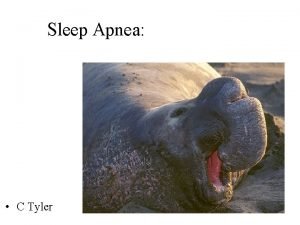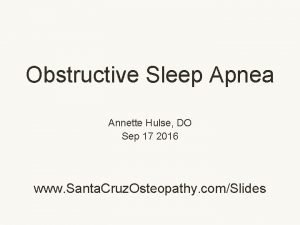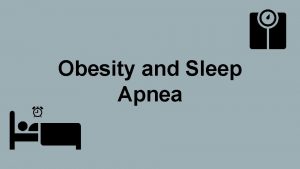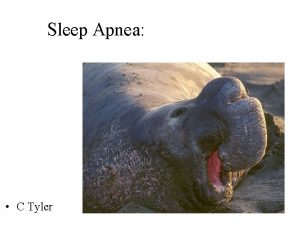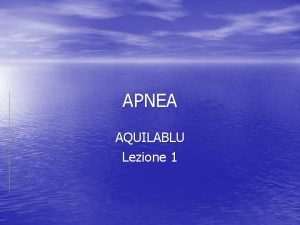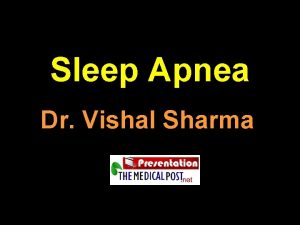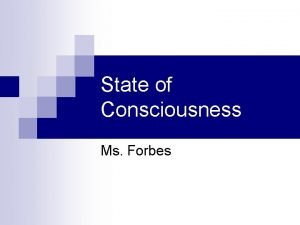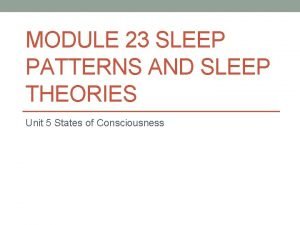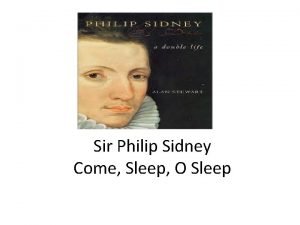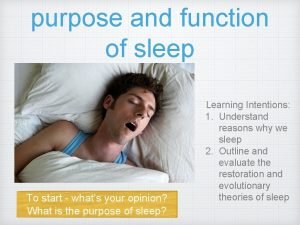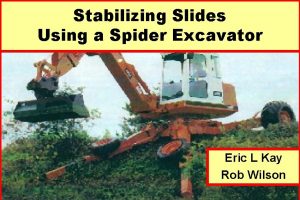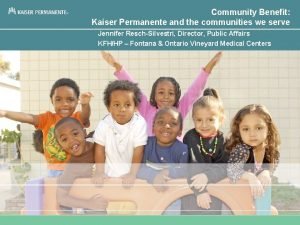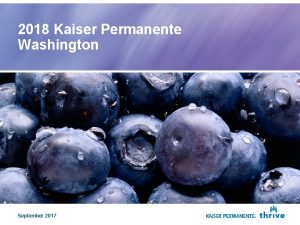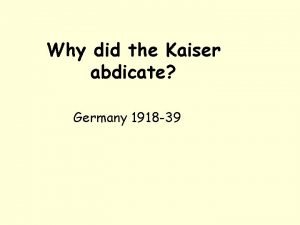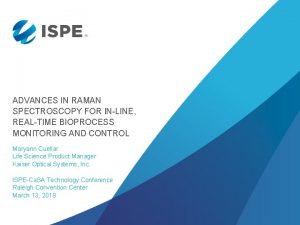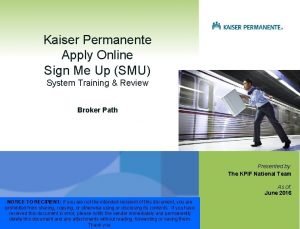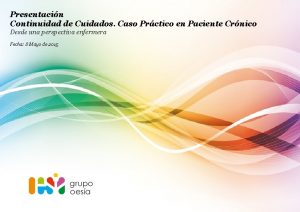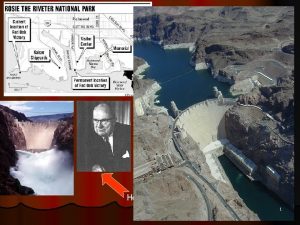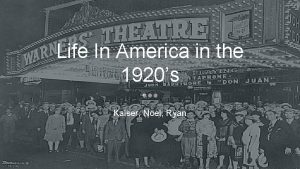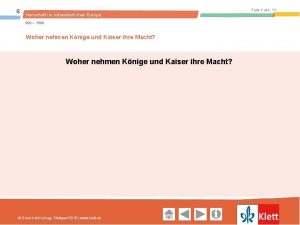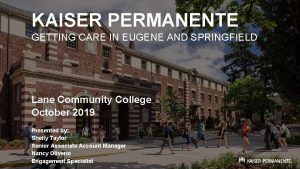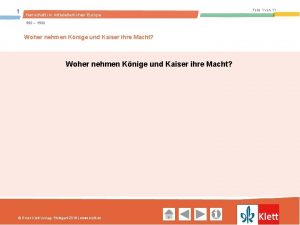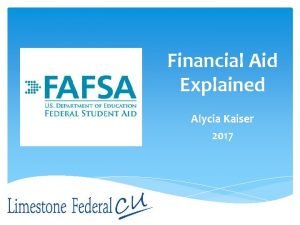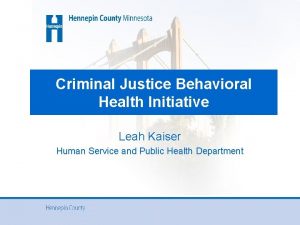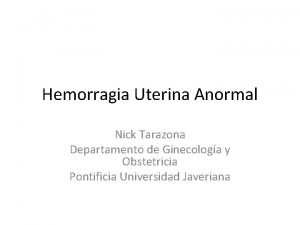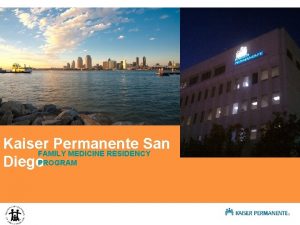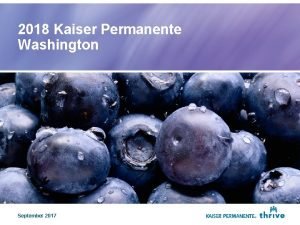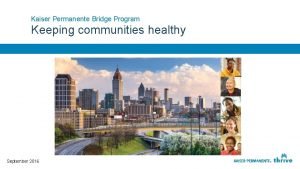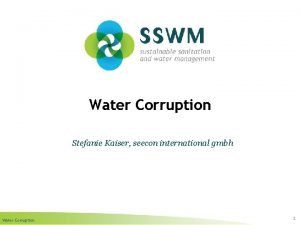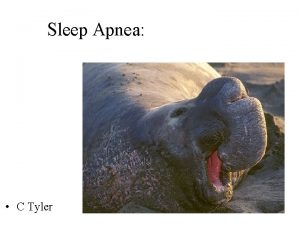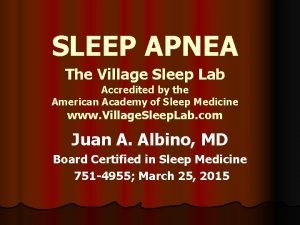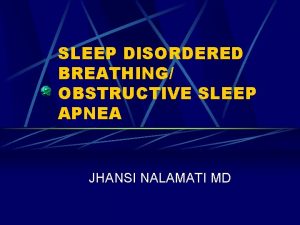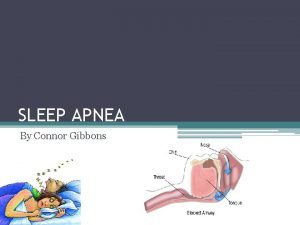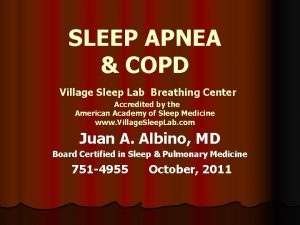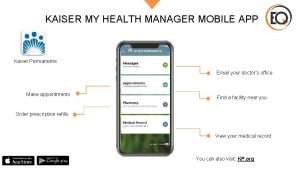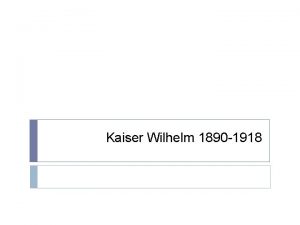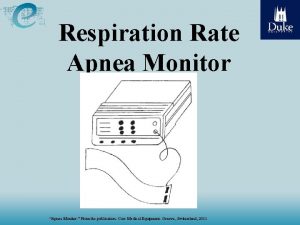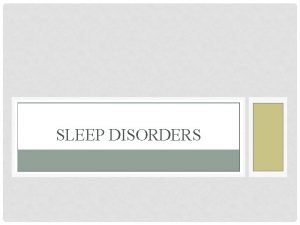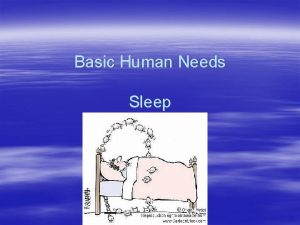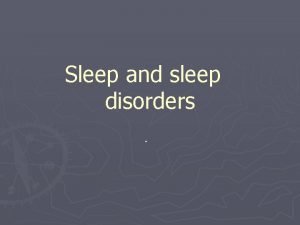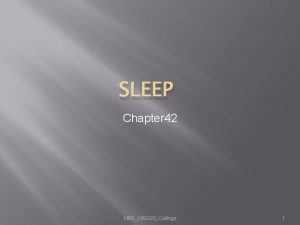Sleep Apnea C Tyler Sleep Apnea Kaiser SF















































- Slides: 47

Sleep Apnea: • C Tyler

Sleep Apnea Kaiser SF Sleep Lab a. k. a. ‘apnea clinic’ Part 4 C Tyler, Sep 2016 Medical Director Kaiser, San Francisco

Alternative Therapies: • CPAP – Gold Standard – Most effective – Titratable (auto) – Verifiable (compliance) – Safe Positional Therapy Weight Loss Smoking Cessation Treat Allergy Treat Acromegaly Treat Hypothyroid Oral Appliance (M. A. D. ) Provent Surgery

Weight Loss

Positional Therapy

Allergy Rx / Stop Smoking

Provent

Surgery: UPPP • • • Irreversible Pain, Death Oro-nasal reflux Voice change 50% “effective” Surgical Literature: – ‘Efficacy’ = 50% reduction in AHI

Genioglossus advancement

Maxillo-mandibular advancement

Oral Appliances • • Mechanical Mandibular Advancement - ‘Jaw Thrust Efficacy - 50% Compliance - ? Better ? Complications - TMJ, discomfort….

Oral Appliance • AASM recommendations: – mild-to-moderate OSA (AHI < 25), – severe OSA who are intolerant or refuse CPAP • Good dentition: no periodontal disease • $1600 vs $800 for CPAP • 50% effective 50% of the time

Hypoglossal Nerve Stimulator • • Recently FDA approved Propofol Endoscopy $40, 000 No long term data

Benefits of Treatment: • Sleep Quality • Quality of wakefulness (and of life) • Cardiovascular risk reduction

OSA as a Cardiovascular Risk Factor • Hypoxia • Adrenergic discharge • Sleep Fragmentation

HTN • ? 70% with essential HTN have OSA • ? 80% with refractory HTN have OSA • ? 50% with HFr. EF or HFp. EF have OSA

Hypertension and OSA

Cardiovascular Events in untreated OSA • 7 year follow up study of healthy middle aged men • Event = new CAD, HTN, MI, Stroke, CV Death

OSA+CHF: Probability of hospitalization or death in 5 years

CSA + SHF: CPAP responders vs non-responders

Cardiovascular Endpoints: • • CONCLUSIONS Therapy with CPAP plus usual care, as compared with usual care alone, did not prevent cardiovascular events in patients with moderate-to-severe obstructive sleep apnea and established cardiovascular disease. • • Average CPAP use < 4 hr per night Inadequate treatment = no benefit

Summary: • OSA causes sleep deprivation • OSA causes oxidative vascular injury • Treatment of OSA – reduces risk of cardiovascular events – reduces motor vehicle accidents • CPAP is the Gold Standard • Alternative treatments exist – for those intolerant of CPAP

Thank you - Chris Tyler

Quiz: • How long do Ducks sleep? • Stanley Kubrick’s work on crime and punishment. • Over geologic and evolutionary time, days are getting (longer: shorter)? • The supra-chiasmatic nucleus responds to (light, melatonin, a $100, 000 drug) • Caffeine antagonizes adenosine (yes/no)

The End

CPAP and Heart Failure • CANPAP trial: no benefit to CPAP in CHF+CSR • f/u paper showed improved outcome IF marked reduction in AHI

Cheyne-Stokes respirations – Crescendo-decrescendo – Arousal at peak hyperpnea – PLM coexists in 85% – 20 -40% of HFr. EF – Hypocapneic (high loop gain) – Resolves in REM sleep (reduced loop gain) – CPAP reduces catechol levels and increases LVEF

Hypoventillation Syndromes • Ondine’s Curse: Central Congenital Hypoventillation • Primary Alveolar Hypoventillation

Central Apnea: • Periodic breathing at altitude • Sleep transition apneas – Any fragmentation of sleep • (insomnia, PLMS, pain, ) • Treatment emergent central apneas – CO 2 falls below apnea threshold – Frequently resolves with time • narcotic-induced central apnea

Future Opportunities: • Linkage to Obesity Efforts – nutritionist, metabolic clinic, etc. • Regional Registry • Population Management Tools • Comprehensive follow-up program – – – Questionnaire Oximetry, Repeat diagnostics Re-titrations Compliance checks New technologies - ie telephonic monitoring

MRI x-section

Cheyne-Stokes Resp • • Periodic Breathing Arterial BP Sympathetic activity (note: C-S resp is not a hypercarbic condition)

Prevalence of OSA/CSA in SHF • Prevalence is higher in men

CHF: Cheyne-Stokes Resp • Modest hypoxemia • Not associated with hypercarbia

Prevelence of CSA in LV dysfunction

CSA and probability of death

Rx of SRBD in Systolic HF • • • Optimize HF Rx O 2 Resp stimulants (CO 2? ? ) CPAP/Bi. PAP adaptive pressure support servoventilation

NC O 2 reduces AHI in SHF

CPAP troubles: air leak


When REM goes Bad Figure: Neuropharmacologic and neurochemical control of cataplexy and excessive daytime sleepiness. Cataplexy, like REM sleep, regulated by balance of adrenergic and cholinergic tone.

• preoptic area (POA) lesions – loss of circadian sleep – Sustained wake state

Encephalitis Lethargica

• Pharmacologic – Amphetamine – blocks DA/NE reuptake – Caffeine – antagonized Adenosine – Modafinil - – blocks DA/NE reuptake

Follow-up and Compliance • • • Annual checks (ideal) If significant weight gain or loss (+/- 10%) Return of symptoms Machine / mask problems Compliance Check: – AHI, hrs of use, average use – Questionnaire: sx, sleep quality, problems

Sleep Latency (MSLT) and sleep deprivation

OSA epi-phenomena • REM rebound • Sleep transition phenomena
 Osa labaka
Osa labaka Annette hulse
Annette hulse Sleep apnea symptoms
Sleep apnea symptoms Hypothaus
Hypothaus Apnea educacion fisica
Apnea educacion fisica Scivolo prono in apnea
Scivolo prono in apnea Uvulo
Uvulo Adults spend about ______% of their sleep in rem sleep.
Adults spend about ______% of their sleep in rem sleep. Module 16 sleep patterns and sleep theories
Module 16 sleep patterns and sleep theories Module 23 sleep patterns and sleep theories
Module 23 sleep patterns and sleep theories Come sleep o sleep
Come sleep o sleep Module 23 sleep patterns and sleep theories
Module 23 sleep patterns and sleep theories Kaiser ferdinand nordbahn
Kaiser ferdinand nordbahn Kaiser spider excavator
Kaiser spider excavator Arms race
Arms race Kaiser mfa northern california
Kaiser mfa northern california Kaiser permanente letterhead
Kaiser permanente letterhead Kaiser permanente wa pharmacy
Kaiser permanente wa pharmacy Why did the kaiser abdicate
Why did the kaiser abdicate Real time bioprocess raman analyzer
Real time bioprocess raman analyzer Kaiser near me
Kaiser near me Kaiser permanente value compass
Kaiser permanente value compass Did kaiser wilhelm have a withered arm
Did kaiser wilhelm have a withered arm Pirámide de kaiser niveles
Pirámide de kaiser niveles Patrick henry elementary school
Patrick henry elementary school What is shell shock
What is shell shock Apply for kaiser
Apply for kaiser Noel kaiser
Noel kaiser Woher nehmen könige und kaiser ihre macht
Woher nehmen könige und kaiser ihre macht Dr kaiser tamás
Dr kaiser tamás Kaiser permanente eugene
Kaiser permanente eugene Woher nehmen könige und kaiser ihre macht
Woher nehmen könige und kaiser ihre macht John lewis peter kaiser
John lewis peter kaiser Kaiser wihlem
Kaiser wihlem Kaiser financial aid
Kaiser financial aid Haydn emperor's hymn
Haydn emperor's hymn Kaiser code pink
Kaiser code pink Leah kaiser
Leah kaiser Why did the german kaiser abdicate?
Why did the german kaiser abdicate? Kaiser woods olympia trail map
Kaiser woods olympia trail map Dr kaiser ginecologista
Dr kaiser ginecologista Al khabbaz london
Al khabbaz london Kaiser san diego family medicine residency
Kaiser san diego family medicine residency Kaiser permanente service area map
Kaiser permanente service area map Kaiser bridge program
Kaiser bridge program Wilmshaven
Wilmshaven Stefanie kaiser
Stefanie kaiser Sameer awsare kaiser
Sameer awsare kaiser
